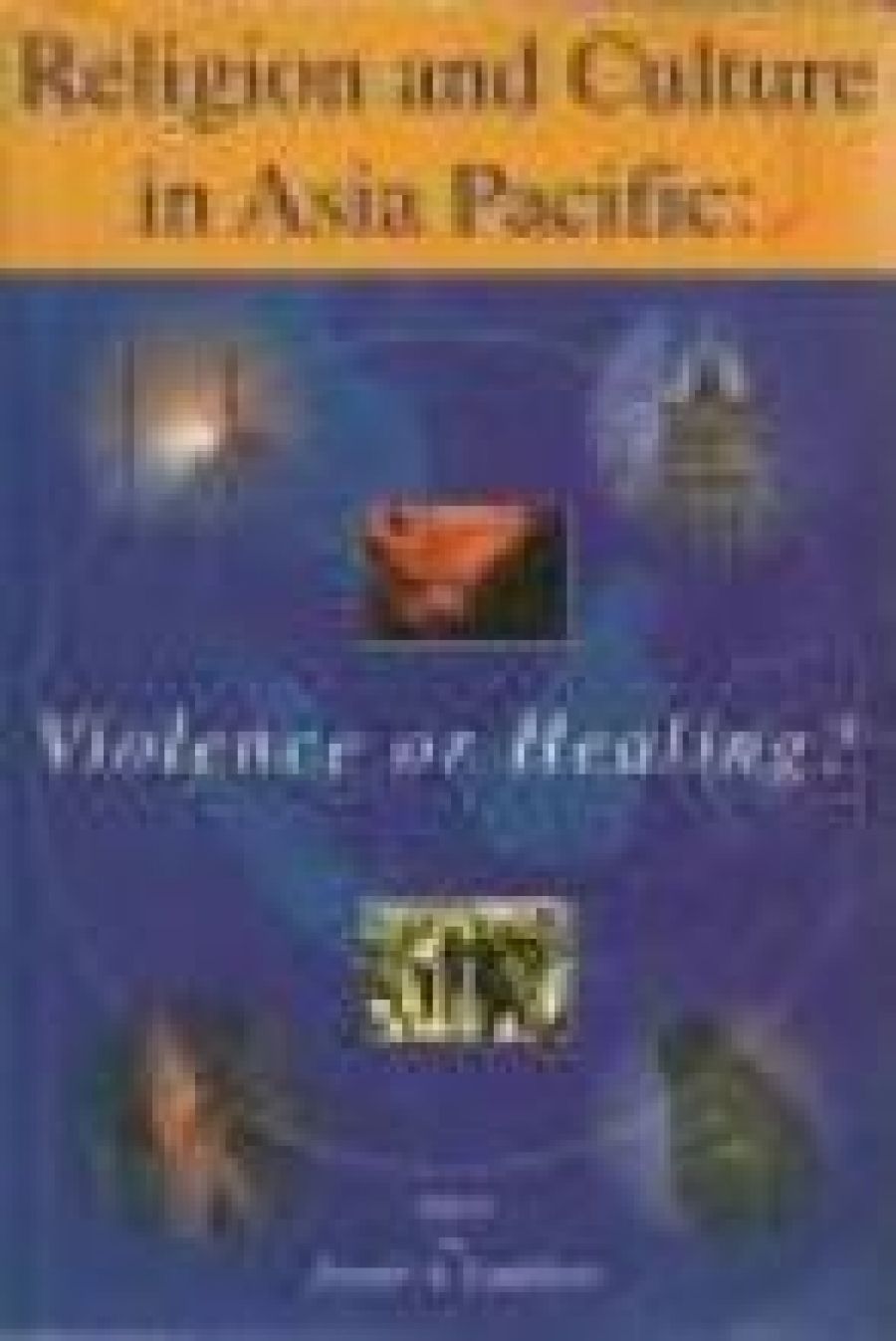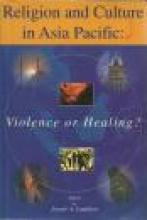
- Free Article: No
- Contents Category: Religion
- Review Article: Yes
- Article Title: Religion
- Article Subtitle: Is it tolerance or indifference?
- Online Only: No
- Custom Highlight Text:
The huge changes that have occurred in Australia in the space of a century were reflected in the recent centenary of Federation celebrations in Melbourne. They were evident, for example, in the repeated acknowledgment of Aboriginal Australians and in the selection of a young female Asian-Australian to speak on behalf of the future.
- Book 1 Title: Religion and Culture in Asia Pacific
- Book 1 Subtitle: Violence or healing?
- Book 1 Biblio: Vista Publications, $13.95 pb, 242 pp
- Book 1 Cover Small (400 x 600):

- Book 1 Cover (800 x 1200):

Perhaps this feature had been noticed by Archbishop George Pell, attending the ceremony on his last day as Roman Catholic Archbishop of Melbourne. A few days later, at his enthronement as Archbishop of Sydney, he reportedly called for closer contact between Christians, Jews, Muslims, and Sikhs in a monotheist response to religious indifference in Australia. This call evidenced another big change in the attitudes of a leading Australian Christian churchman. Once religions claimed exclusive possession of the truth for their particular beliefs and wanted as little as possible to do with others. Now they are exploring the common ground between all people of spiritual conviction. This is a healthy development given that the religion of most of us depends on the accidents of our birthplace and parental persuasion, if any.
The same search for common ground in religious convictions was explored at a conference in Melbourne in October 2000. The papers given at that conference have now been published as Religion and Culture in Asia Pacific: Violence or healing?, edited by Professor Joseph Camilleri of La Trobe University. He is President of Pax Christi in Australia, one of the sponsors of the conference. The Uniting Church in Australia also supported the meeting. But it was not confined to Christian viewpoints. No study of religion in Asia, at least, could leave out the other great spiritual traditions found on the Asian continent: Islam, Hinduism, Sikhism, Jainism, as well as the Buddhist, Taoist, and Confucian traditions.
Like the conference, the collected papers show the variety that exists within and between the different religious traditions of Asia and the Pacific. One theme woven through any study of religion in the region is the ironic contrast between the principles of love and forbearance taught by all religions, and the fanaticism and violence sometimes practised by advocates of particular beliefs. Another theme is that people of different traditions need to get to know more about the approach of others. As Archbishop Peter Carnley, Anglican Primate in Australia, writes in his contribution: ‘As we hear of one another’s stories and they become part of our own, we enter more deeply into a … community of harmony and peace.’ These views are wholly consistent with the Primate’s recent suggestion that the Anglican Church in Australia should search for ways to accommodate homosexuals in the Church, who have long been the subjects of persecution based on religious beliefs that are still held by some religious people.
There is an interesting contribution by Wan Azizah Ismail, wife of the imprisoned Malaysian leader Anwar Ibrahim. Her appeal is for a greater appreciation in the West for the teachings about tolerance in Islam. Only indirectly does she refer to her husband’s case.
Several contributors write of the tensions that exist between different religions in the one society. These tensions often reinforce ethnic rivalries. The situations in Sri Lanka, Indonesia and India are cases in point. Rather sad tales are told of religion sometimes reinforcing autocratic political power, in Bougainville and Fiji. But it is not so long ago that Australia had sectarian prejudice down to an art form. A key question presented by this book is whether it is possible to maintain tolerance for the beliefs of others with enthusiasm and conviction, or whether it is necessary for religion to wane as a powerful social force before tolerance seeps into the opinions of its practitioners and adherents as they struggle to arrest declining numbers.
Not all the contributors are enthusiasts for religion as it is commonly practised in Asia and the Pacific. For example, Swami Agnivesh from India reminds readers, rather bluntly, that for centuries ‘we have been at each other’s throats in the name of God-revealed books’. Religion, he recalls, is a ‘massive industry, big business with an annual turnover of hundreds of billions of dollars dedicated to saving souls from bad karma and eternal hell fire’. He asserts that religion remains partly responsible for much bloodshed in the world. And now, he declares, there is a ‘new religion’, namely the globalism of market forces. Like other contributors, Agnivesh pulls no punches.
There are practical suggestions about interfaith dialogue, and the ways in which religions can contribute to peace and security as well as individual human rights. It is here that a sticking-point is reached. It is still difficult in some societies for those who believe they have the entire truth, essential to eternal life, to tolerate religious freedom. Yet such freedom includes (as Justice Lionel Murphy never tired of saying) freedom from religion as well as freedom of religion. In some parts of Asia, apostasy is still severely punished. And since the conference on which this book was based, the world has witnessed the most public symbolism of intolerance for decades: the destruction by the Taliban in Afghanistan of the great statues of Buddha at Bamiyan.
Yet it is not always so. The book concludes with many stories of the contributions of organised religions to peace and reconciliation between former enemies in every corner of the world. In his closing reflections, Professor Camilleri emphasises the need not only to explore common ground and reconciliation but also to respect and, indeed, celebrate religious differences. He points out that poverty provides the main breeding ground for intolerance. He urges more dialogue and sees Australia as well placed to facilitate useful exchanges between people of different faiths. The lingering question remains: Is Australia well placed because it is now a multicultural society that permits the uninhibited activities of every religious persuasion? Or is it because most Australians now generally exhibit a lack of passion about religion because an ever-increasing proportion of our people regard it as irrelevant to their lives? Is our ethos tolerance or indifference?
Religion is still a vital force in most parts of Asia and the Pacific. Australians, coming to grips with the geography into which their history has placed them, must explore this critical dimension of the part of the world they live in. This new book helps them to do so.


Comments powered by CComment